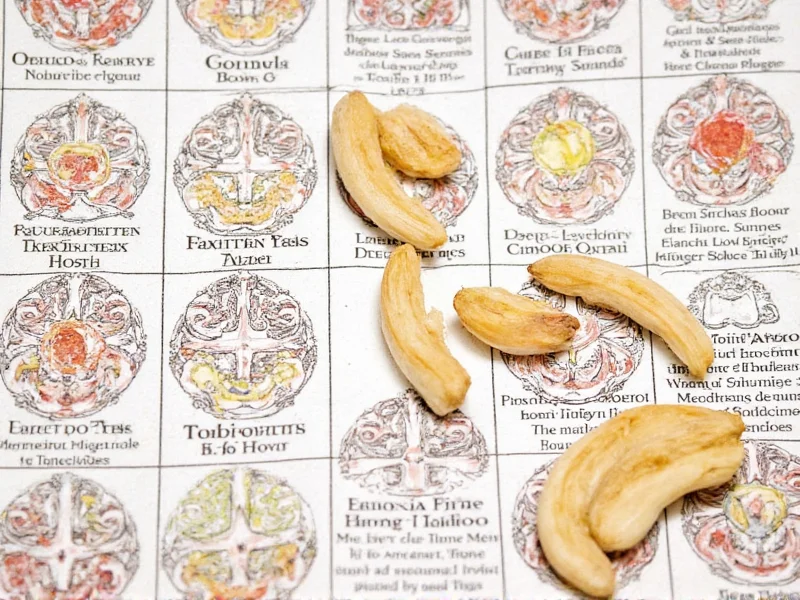Understanding spice expiration dates is essential for maintaining kitchen quality without compromising food safety. Unlike perishable foods, dried spices rarely become dangerous to consume past their prime—they simply lose their vibrant flavors and aromatic qualities. This distinction between safety and quality is crucial for home cooks and professional chefs alike.
What "Expiration" Really Means for Spices
When you see "best by" or "use by" dates on spice containers, these indicate peak quality rather than safety deadlines. Spices are dried products with minimal moisture content, creating an environment where bacteria and mold cannot thrive. The primary concern with aged spices is flavor degradation, not foodborne illness.
Ground spices have a larger surface area exposed to air, causing them to lose potency faster than their whole counterparts. A freshly ground cinnamon stick delivers significantly more aromatic compounds than pre-ground cinnamon that's been sitting on your shelf for two years. This scientific principle explains why whole spices consistently outlast ground varieties.
Spice Shelf Life Guidelines
The longevity of your spices depends on several factors including form (ground vs. whole), storage conditions, and specific spice composition. While individual results may vary, these general guidelines provide reliable expectations for common kitchen staples.
| Spice Type | Whole Form Shelf Life | Ground Form Shelf Life | Key Indicators of Degradation |
|---|---|---|---|
| Cinnamon, Cloves, Allspice | 3-4 years | 2-3 years | Faded reddish-brown color, weak aroma |
| Nutmeg, Cardamom, Coriander | 3-4 years | 2-3 years | Loss of distinctive fragrance, dull appearance |
| Cumin, Chili Powder, Paprika | 4 years | 1-2 years | Significant color fading (especially paprika), diminished heat |
| Black Pepper, Mustard Seed | 4+ years | 2-3 years | Reduced pungency, weaker flavor impact |
| Herbs (Basil, Oregano, Thyme) | N/A | 1-2 years | Brownish color, hay-like smell, minimal flavor |
How to Determine If Your Spices Have Lost Potency
Before automatically discarding spices past their "best by" date, perform these simple tests to assess their current condition:
The Aroma Test
Crush a small amount between your fingers and smell immediately. Fresh spices should release a strong, distinctive fragrance. If you need to inhale deeply to detect any scent, or if the aroma seems dull and one-dimensional, your spices have likely lost significant potency.
The Visual Inspection
Brightly colored spices like paprika and turmeric should maintain their vibrant hues. When these spices turn dull or brownish, they've likely degraded. Whole spices should feel hard and brittle, not soft or moist.
The Flavor Check
For the definitive test, add a small pinch to a simple dish like plain rice or scrambled eggs. If the spice doesn't noticeably enhance the flavor, it's time to replace it. Remember that degraded spices won't make food unsafe—they'll just result in bland, unsatisfying meals.
Maximizing Your Spices' Usable Life
Proper storage techniques can significantly extend the shelf life of your spice collection. Consider these evidence-based recommendations:
- Air-tight containers - Transfer spices from flimsy store packaging to glass or metal containers with tight-sealing lids to prevent oxidation
- Cool, dark location - Store away from stoves, ovens, and direct sunlight which accelerate flavor loss
- Avoid refrigerator storage - Temperature fluctuations cause condensation that introduces moisture
- Buy in smaller quantities - Purchase only what you'll use within 6-12 months for optimal freshness
- Label with purchase dates - Use a marker to note when you opened each container
Special Considerations for Spice Blends and Seasoned Salts
Commercial spice blends and seasoned salts require additional attention as they often contain additional ingredients beyond pure spices. Garlic salt, onion powder, and pre-mixed curry blends may include anti-caking agents or other additives that affect shelf life.
Blends containing dried herbs typically degrade faster than single-ingredient spices. Those with added salt generally maintain quality longer due to salt's preservative properties. Always check for any signs of moisture or clumping in seasoned salt products, as this indicates potential quality issues.
When Spice "Expiration" Becomes a Safety Issue
While pure dried spices rarely pose safety concerns, certain situations warrant caution:
- Spice blends containing dried dairy products or other perishable ingredients
- Homemade spice mixes with added oils or fresh ingredients
- Any spices showing visible mold, moisture, or insect activity
- Products with an off or musty smell (beyond simple flavor loss)
In these cases, discard the product immediately. When in doubt about safety, follow the food safety principle: "When uncertain, throw it out."
Practical Spice Management Strategies
Developing a system for managing your spice collection ensures you always have quality ingredients available:
- Organize spices alphabetically or by cuisine type for easy identification
- Keep frequently used spices in a dedicated drawer or container
- Perform quarterly spice cabinet audits using the aroma test
- Consider investing in a dedicated spice grinder for whole spices
- Store backup quantities in the freezer for long-term preservation
Professional chefs often maintain two sets of spices—daily use containers and larger backup storage. This system ensures constant freshness while minimizing waste from frequent small purchases.











 浙公网安备
33010002000092号
浙公网安备
33010002000092号 浙B2-20120091-4
浙B2-20120091-4